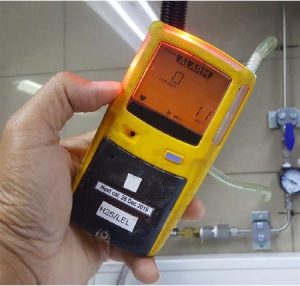 Our monitors are designed to alert us to the presence of toxic gases, and oxygen-deficient, combustible atmospheres existing in our workplace environments. The Occupational Safety and Health Administration standards require employers to develop standard procedures for calibrating and using DRPGMs, including documentation verifying proper maintenance and calibration of their instruments. Instrument inaccuracy can lead to exposure to hazardous levels of flammable gases, toxic gases, or to an oxygen-deficient atmosphere causing workers to suffer serious injuries or illness, and even death, explosions, or destruction of property.
Our monitors are designed to alert us to the presence of toxic gases, and oxygen-deficient, combustible atmospheres existing in our workplace environments. The Occupational Safety and Health Administration standards require employers to develop standard procedures for calibrating and using DRPGMs, including documentation verifying proper maintenance and calibration of their instruments. Instrument inaccuracy can lead to exposure to hazardous levels of flammable gases, toxic gases, or to an oxygen-deficient atmosphere causing workers to suffer serious injuries or illness, and even death, explosions, or destruction of property.
REMEMBER, there are conditions that could affect accuracy of the DRPGM readings such as:
- Degradation caused by exposure to phosphates and phosphorus-containing components, degradation of lead-containing components, chemical degradation of sensors and drift in electronic components that occur normally over time, use in extreme environmental conditions, such as high/low temperature and humidity, and high levels of airborne particulates;
- Exposure to high concentrations of the target gases and vapors, exposure of catalytic hot-bead LEL sensors in the instruments to volatile silicones, hydride gases, halogenated hydrocarbons, and sulfide gases, exposure of electrochemical toxic gas sensors to solvent vapors and highly corrosive gases; and
- Handling/jostling of the equipment causing enough vibration or shock over time to affect electronic components and circuitry.
REMEMBER to follow the manufacturers instruction for proper calibration procedures—you have to do a bump test (or function check); and a calibration check or full calibration.
WORKER SAFETY: THE NUMBER ONE REASON FOR PROPER AND REGULAR CALIBRATION!
Download flyer: STOTW_1115_Calibrating_and_Testing_DRPGM Download Spanish flyer: STOTW_1115_Calibrating_and_Testing_DRPGM_esp

